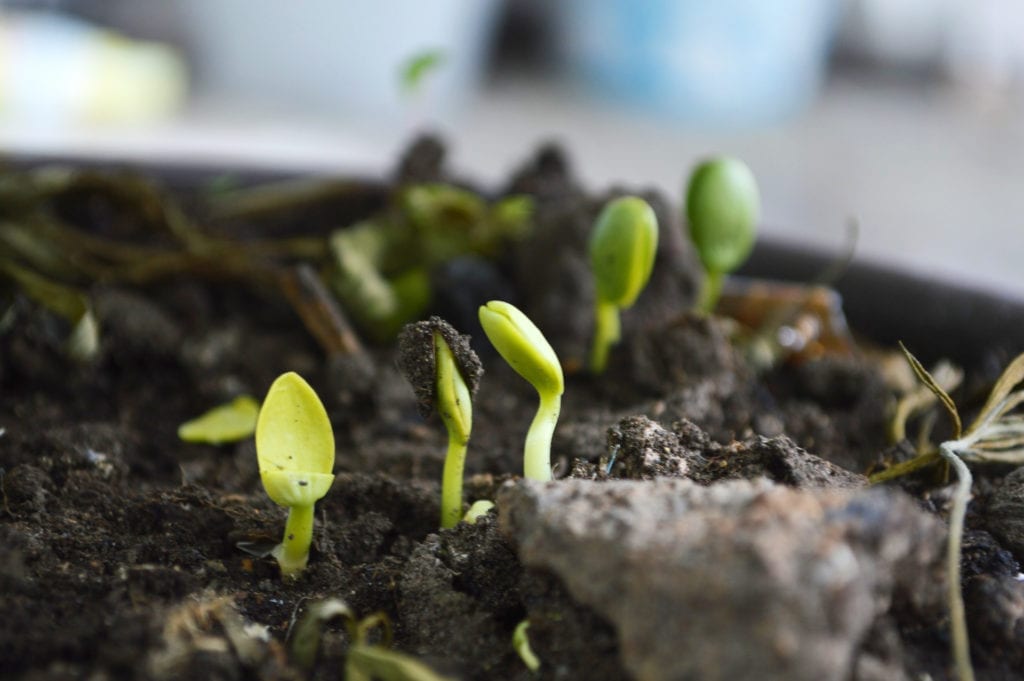Infinite ADU-500 RTU Enables Remote Data Collection
 Measuring soil moisture content is critical in a variety of industries and the inability to collect accurate and reliable data can have far-reaching implications. For example, geologists studying landslide potential, civil engineers designing watersheds or the National Weather Service performing floods prediction all require soil moisture data. And while all of these have impacts on human society none are as critical as the use of moisture information in agricultural studies and irrigation monitoring designed to optimize crop quality and field yield.
Measuring soil moisture content is critical in a variety of industries and the inability to collect accurate and reliable data can have far-reaching implications. For example, geologists studying landslide potential, civil engineers designing watersheds or the National Weather Service performing floods prediction all require soil moisture data. And while all of these have impacts on human society none are as critical as the use of moisture information in agricultural studies and irrigation monitoring designed to optimize crop quality and field yield.
This Application Note is focused on how the Infinite ADU-500 Autonomous RTU Data Logger can capture data from soil moisture sensors via its SDI-12 sensor channels. It is well suited for remote locations and used in field studies since it can operate without mains power and transmit the data files or send alerts via its built-in cell modem.
Soil Moisture Monitoring Measurements
Measuring soil moisture is important to help farmers in monitoring irrigation systems to allow them to use less water while increasing yields. When soil moisture data is used in conjunction with environmental and meteorological data farmers can predict how much water will be needed at any time to maximize plant growth during various stages of growth. There are several styles of soil sensors however those using the SDI-12 protocol offer the benefit of low power consumption and the ability to connect multiple sensors to a data logger via a single cable.
 Soil Monitoring Sensor
Soil Monitoring Sensor
There are several methods of determining soil moisture content and in some cases electrical conductivity at the same time. Simple sensors usually measure the resistivity of the soil or the voltage produced between two electrodes which act as a galvanic cell with the soil as the electrolyte. However, the accuracy of these sensors is limited and may require calibration based on soil type. More accurate measurement of moisture is done by determining the dielectric constant of the soil using one of 4 methods:
• Time Domain Reflectometry (TDR) measures the dielectric constant by sending out a signal along 2 electrodes embedded in the soil and measuring how long it takes to receive the reflected signal back.
• Time Domain Transmissometry (TDT) is similar to TDR except that measurement is made by determining how long it takes the signal to propagate forward in a closed circuit.
• Frequency Domain Reflectometry (FDR) measures the dielectric constant by measuring the frequency of an oscillator where the soil forms part of the circuit.
• Coaxial Impedance Dielectric Reflectometry (CIDR) measures the dielectric constant by applying radio frequency signals to the soil and measuring the ratio of the incident and reflected signals.
RTU Data Logger Application Case Study
In the following example, ADU-500 is used to measure and log air temperature, humidity, precipitation, and soil moisture. The ultra-low-power Vaisala HMP60 sensor is used to measure air temperature and humidity. A tipping bucket rain gauge is connected to a digital counter input to collect precipitation data. Finally, 6 soil moisture sensors are connected to the SDI-12 port allowing the measurement of soil moisture at various depths. The SDI-12 is a simple low-speed bus that uses 3 wires to provide power and communication. The ADU-500 RTU is configured to sample the humidity and moisture sensors every 15 minutes along with counting pulses from the tipping bucket gauge to determine precipitation rate and total precipitation. The sampled data is logged in memory and uploaded via FTP at a pre-determined time using the built-in 3G cellular modem. Alarm events, for example, excessive rainfall rates, generate alert SMS text messages that are sent to predefined users so they can take corrective action if necessary.
The Infinite ADU-500 is an autonomous data logger/RTU (remote telemetry unit) that can record data from up to 2 analog sensors and 3 digital sensors along with multiple SDI-12 sensors with a maximum of 48 SDI-12 channels. The ADU-500 provides a flexible, cost-effective platform for important remote data logging applications. Powered only by the internal 3.6V Lithium Thionyl battery, it can provide 12V excitation for the connected SDI-12 sensors.
The battery lifetime is calculated for different sensor types below:
| Manufacturer |
Stevens |
Decagon |
Acclima |
Campbell Scientific |
| Soil sensor |
Hydra Probe II |
5TE / GS3 |
SEN-SDI |
CS650 / CS655 |
| Type |
CIDR |
FDR |
TDT |
TDR |
| Nr. of sensors |
6 |
6 |
6 |
6 |
| IIDLE [mA] |
1 |
0.3 |
0.015 |
0.135 |
| IACT [mA] |
10 |
10 / 25 |
30 |
45 |
| Warm-up time [sec] |
3 |
3 |
3 |
3 |
| Measurement time [sec] |
2 |
0.15 |
0.45 |
0.003 |
| Battery Lifetime [Years]1) |
1.2 |
5 / 4 |
2.5 |
6.6 |
Summary
Measuring soil moisture is important in a number of applications including agriculture and civil engineering. While there are several types of soil moisture
sensors, those which employ the SDI-12 provide accurate measurements and offer easy connection and low power operation. The Infinite ADU-500 is the perfect data logger/RTU for these sensors providing support for remote and field applications with a built-in cell modem, battery power, and SDI-12 support.
For further information on the ADU-500 Autonomous RTU Data Logger, measuring soil moisture, or to find the ideal solution for your application-specific needs, contact a CAS Data Logger Application Specialist at (800) 956-4437 or request more information.

